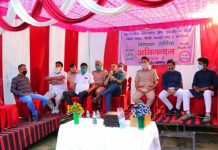
Chandigarh
9 March 2018
DIVYA AZAD
Punjab launched its first of a kind last mile one-stop shop service providing centers or ‘Sewa Kendras’ as they are referred to in August of 2016. These Kendras were designed in an effort to provide efficient and transparent governance to the people at their doorsteps with 1,758 centers in rural areas. They provide a total of 223 services, including e-governance services from several mission mode projects, covering domains such as agriculture, land records, health, passports, municipalities, etc. to help citizen access a range of services from a single centre.
In a country like India with a wide geographical spread, bureaucratic complexities and red tapism, e-governance is the only tool to plug the leaks in the system. The Kendras intended to minimize public interaction with various offices, enhance efficiency of the administration, and delivery of services. The ultimate aim of the Kendra was to help common people, de-centralize services and weed out corruption & middle men. Records show that in the first month of its operation, the Sewa Kendras received 1.51 lakh applications in September, 2016 while it had touched 8,00,000 applications by September 2017 showing exponential increase that clearly indicated acceptance of the model and its need amongst citizens.
Citizens were charged a token amount at these Kendras which was only meant to sustain the system during the first phase, where usage of the Kendra was still growing, once the Kendra would have achieved its optimum footfall the government would no longer have to pay the service provider. Alternatively, it would have turned profitable and become a revenue generator for the government.
Additionally, the centers had several other positive impacts in the areas where they were set up. The Kendras provided employment to over 7000 persons including women and persons with disability, and at different levels as per qualification. People no longer have to travel great distances to look for jobs, gainful employment is now available, even in rural areas. While the Government interface was reduced to 22 departments that enabled faster processing of applications for 170 citizen centric services.
Over the past few years, as connectivity in the country grew, e-governance has become a crucial part of the government, promising efficiency, transparency, accountability and accessibility. The decision of shutting down the Sewa Kendras will undo the efforts that have been made in this direction. Testimonials of people where the Kendras have to be shut down show that many people are now worried as they would have to travel long distances to access services which were till now available at their doorstep.
Couple of other states and countries looked at Punjab Sewa Kendras disruptive model to implement while the state itself which became the flag bearer of the citizen services is going back to the dynasty.















































